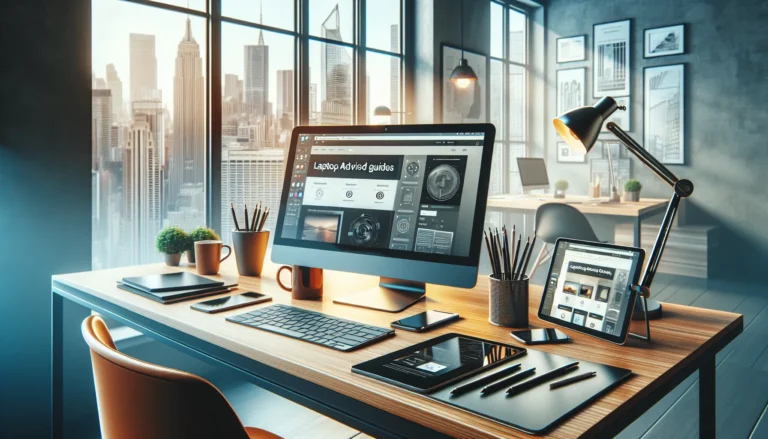
On the contrary, many more straightforward systems give content and digital managers everything they need to manage content with strict templated designs that the designer must follow versus content management. A headless CMS is the perfect solution. This article explains how a headless CMS can offer centralized control while simultaneously offering designers the freedom to create.
Understanding the Flexibility of Headless CMS
A headless CMS means content can be managed in the back without connection to a front-end rendering. One of the key benefits of using headless CMS for content management is this decoupling, which allows designers much more freedom than a traditional CMS would permit, as those systems have templated standards that force a design. Here, a design can be anything and tailored specifically for any audience on any platform and multiple times over. This freedom of design not only cultivates creativity but also fosters branding distinction and accelerated testing/iterations, which increase engagement.
Preserving Brand Consistency Through Centralized Content Management
While headless CMS does provide extensive access to design possibilities, it also enables strong content governance. Since content exists in one centralized place and is pushed to all digital properties, teams can govern overarching messages, images, and branding elements from one centralized spot. Nothing is left to chance, and every anticipated creative design possibility can be aligned with branding intentions to foster brand equity and consistency.
Enabling Cross-Platform Content Delivery Without Design Compromise
Whether website, mobile, IoT, digital signage, or some future form yet to be invented, the contemporary digital transformation requires content to be delivered everywhere. A Headless CMS creates an API for content delivery to any front-end location without interfering with a designer’s intentions. Therefore, teams can create a consistent, compelling experience across multiple locations while adapting each rendering to serve the best interests of the user without compromising content ownership or access to the larger back-end library.
Empowering Designers with Modular Content Structures
Designers also appreciate the modular content structures that headless CMSes can provide. For instance, content teams can create content blocks that are repurposable and assemble them on their own into one-of-a-kind layouts and UIs without needing to go back to the designers for additional assistance. Such modular freedom allows designers to tinker, make changes, and produce new designs to get up and running faster without creative restraints. At the same time, modularity ensures consistency of content, as well as exponentially faster design and development efforts.
Streamlining Collaboration Between Designers and Content Teams
A Headless CMS fosters better collaboration among designers, content producers, and developers. Since the architecture is decoupled, personnel can work on independent timelines without depending on one another front-end rendering by design teams can be constructed without concurrently needing content development and vice versa for backend needs. These collaborative opportunities generate fewer bottlenecks, more effective communication campaigns, and faster response times. Therefore, with transparency and accessibility, where people can create whatever they want independently, there is also an effective guided structure to keep complex projects on task.
Utilizing Robust APIs for Dynamic Design Integration
Thanks to the powerful APIs of headless CMS technology, content can be rendered within different design experiences on the fly. API integration allows for backend content to be rendered and frontend designed with live edits, personalized user experience features, and malleable UI designs. Integration capabilities that favor APIs mean that the design can continuously change over time without losing access to content or rendering inaccuracies.
Enhancing User Experience Through Personalized Design
Headless CMS platforms allow for highly customized digital experiences. By utilizing either user data points, tagging content, or analytic insights offered from within the CMS, designers constantly have the ability to change the UI and content presentations to cater to the needs of specific users. As such, content presentations are more likely to be connected on a deeper level, leading to more frequent use, satisfaction, and subsequent visits. A headless CMS that allows for customization of design gives the team the ability to present the focused experience with essential subdomain and branding control.
Strengthening Governance with Granular Permissions and Workflows
Governance is critical to avoid overreach in design. Many Headless CMS solutions offer permissioning at an incredibly granular level from approval chains to role-based access. The potential for such governance creates an atmosphere where design and content inclusion occurs through legitimate channels, respect for design requirements, and alignment with business objectives. Thus, when governance is successful, there’s reduced risk, reduced errors, and accountability to the right people so that creative teams are empowered to create as long as they stay within anticipated boundaries.
Optimizing Performance Across Diverse User Experiences
With headless CMS architecture, performance becomes a priority as it fosters a uniform experience across digital channels. Developers have the opportunity to craft a streamlined, optimal front end, unencumbered by the templated restrictions of traditional CMS platforms. Accessing content through an API ensures quicker loading and responsiveness, enhancing operability across devices and channels. When performance is paramount, people spend more time on the site, are happy with their experiences, and digital properties stay competitive.
Achieving Scalability and Adaptability in Design
The capability to scale is necessary as digital experiences grow and change. However, the technology of headless CMS is available to organizations just when they need it, in a scaled, innate fashion. Organizations can quickly scale digital assets, create new channels, and delve into emerging markets with minimal fuss. Content creators only need to reskin what already exists for a different use instead of starting from scratch. This kind of ongoing development breeds efficacy, comfort, and a competitive advantage. Therefore, the ability to scale means easy design and easier operations for inevitable sustainability.
Leveraging Analytics to Inform Creative Decisions
With analytics, designers and content creators learn more about how users engage, interact, and use them in a headless CMS. If analytics tell the designer what should be done based on previous use, the designer knows which experience is the most effective. Creating from an analytics perspective fosters better steps going forward because design adjustments, enhancements, or new designs will have more meaning and relevance from a content perspective to better user experience and ultimately better digital interactiveness.
Ensuring Future-Proof Design Flexibility
The capacity to future-proof design approaches is essential. For instance, a headless CMS structure supports future-proofing since it can be integrated quickly with new technology, platforms, and user requirements in the future. Designers can relatively easily integrate emerging technologies, such as AI, AR, or voice systems, so user experiences are routinely optimized over time. Thus, when designs can shift and be adjusted for future purposes, brands can remain agile, innovative, and responsive in the present while being positioned for sustained digital success many years down the line.
Reducing Design and Development Costs
Therefore, design and development costs are significantly decreased by a dramatic reduction in technical complexity, no redundant work, and efficiency in every step of the content creation process. For example, many CMS platforms are so rigid that they only allow for limited abilities and extensive customization down the line, which increases costs and time for development and resource drains.
Instead, a headless functionality appeals to a more universal understanding across generations so that content construction becomes easier with access to the same modular pieces across all channels and all campaigns, thus decreasing the time and people needed to build, adjust, and manage digital pieces. Centralized content management also provides teams with a single source of truth for all content and digital assets and reduces redundancy, chaos, and operational costs.
A headless CMS ensures that content exists, is controlled, and refreshed in one centralized location, allowing for cross-collaboration between content, UX/UI developers, and designers to be a fluid process. Less time is spent on development due to reduced mistakes and misunderstandings, and additional costs are avoided as it becomes less laborious to refresh the same content across various digital channels and spaces when it’s not manually done multiple times. Moreover, long-term avoidable costs are circumvented when faster development saves time, unnecessary manpower, and costs in the long run.
Moreover, costs related to development and upkeep are lowered thanks to a modular content approach. Assets can be designed and developed faster and deployed based on pre-existing modular assets as interchangeable content pieces. This not only facilitates quicker turnaround times on projects but also easier and less time-consuming future maintenance and edits which reduce operational costs and open up team bandwidth for other projects that require high-level creative strategy versus time-consuming administrative minutia.
The increased operational cost savings from the operational efficiencies of headless CMS technologies and the reduced developmental efforts mean a climate where companies can spend more on innovation, niche marketing, advanced analytics, and user experience. They no longer have to spend money trying to maintain a legacy or a digital footprint that has gotten too complicated or divert fiscal energy into addressing maintenance issues.
Time is money, and when IT professionals have to troubleshoot legacy technologies, companies have to pay more to keep their operations afloat. Instead, these redirected funds can be spent on loyalty programs, engagement initiatives, content debuts, and more dynamic and growing digital experiences.
Ultimately, investing in a headless CMS allows companies to position themselves with a competitive advantage of operational cost savings in an era of technological advancement. With reduced development costs and operational complexities compounded into easier management and support for long-term competitive advantages accrued through increased content management capabilities, headless CMS technologies inspire further development and innovation in an increasingly complicated digital landscape.
Continually Refining Design Practices
Without the idea of a finished product, a company can always be in a state of betterment. As one can always analyze whether design techniques are successful, gather user feedback, and regularly assess content performance, companies can make proactive changes to their interfaces and experiences. Constant betterment creates uniform designs that function, resonate in the present, and remain appealing to users providing longer-term satisfaction and effectiveness. A headless CMS fosters such betterment.
Balancing Creative Freedom with Structured Control
A headless CMS offers businesses ultimate creative control without risking compliance and reliability of centralized management and governance in a manner that few other options allow. For example, a traditional CMS may offer unwanted limitations in content creation and development capabilities via mandatory templates, limited design options, and preset display avenues.
A headless approach facilitates the work for design teams, allowing for the creation of UX they want for their target audiences and the latest digital trends. With a content-agnostic structure, unique APIs, intra-team collaborative opportunities, multi-channel analytic integrations, and digital elasticity and growth potential in the cloud, businesses can trust rapid growth and development efforts without risking compliance, reliability, or consistency of some or all of their digital assets.
The use of a Headless CMS with a modular content structure significantly enhances design team velocity and flexibility. Since modular content pieces can be assembled on their own and reused across projects and contexts, for example, designers can evaluate and build microcomponents to test small ideas quickly. This agility allows for brainstorming, experimentation, and rapid response to fluid market conditions, audience feedback, and competition response.
Furthermore, many Headless CMS come equipped with superior APIs that encourage integration with various digital frontends, emerging technologies, and third-party solutions. The API-driven content delivery process enables design teams to send content across multiple channels web, mobile, IoT, digital signage, and even AR and VR rapidly without re-creating or replicating efforts in other arenas. Therefore, design teams find both freedom and operational efficacy as regulated access to messaging, branding, and content ownership exists across the company.
Furthermore, effective team collaboration is another major advantage a headless CMS allows. Because the content and display portions are so distinctly separate, teams invested in either portion can concentrate on their contributions and responsibilities without too much workflow interruptions or miscommunication. Developers coding in the backend while content creators, marketers, and designers work on the frontend can all work simultaneously, fostering greater efficiency and quicker project turnarounds and tighter deadlines without jeopardizing a cohesive quality across digital touchpoints that connect users to the proper messaging.
In addition, access to powerful analytics and insights from a headless CMS promote creative decision-making. When a proper headless CMS is established, it’s easy to track if content performs or engages with an audience across channels and settings; thus, design teams can see which experiences resonate best with audiences and which may need some tweaks. Creative decisions supported by these analytics ensure that designs are meaningful and effective beyond being on-brand and catering to user expectations and business goals.
Moreover, the scalable infrastructure behind the headless CMS technology itself reinforces ongoing innovation and design flexibility. A cloud-based, scalable infrastructure ensures optimal performance and dependability whether a company is scaling its reach, expanding into new geographic territories, or utilizing complex digital solutions. Reduced staffing needs for technical maintenance related to an infrastructural scalable system encourage easier management and uniform responsiveness across multiple digital platforms, taking organizational effectiveness and customer satisfaction to unprecedented levels.
Ultimately, the technology’s ability to sustain the best of both worlds in design flexibility and enterprise-level control for all central components significantly enhances customer engagement opportunities, operational responsiveness, and brand coherence. Companies leveraging such technology will position themselves for sustainable digital growth, long-term competitive advantages over other comparable companies, and the opportunity for ongoing innovation and integration without needing excessive future redos that stem from past digital developmental failures. Empowered by headless CMS technology, companies can genuinely render their own solutions and strategies despite the pitfalls of the increasingly digital world.



